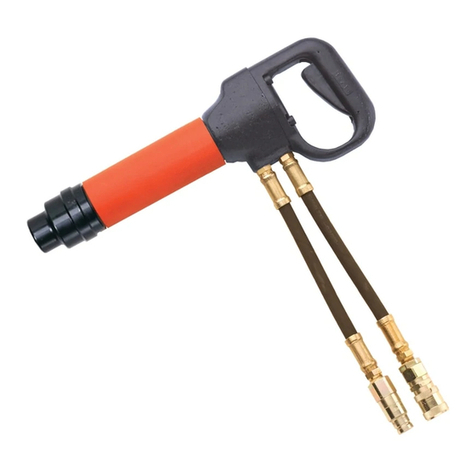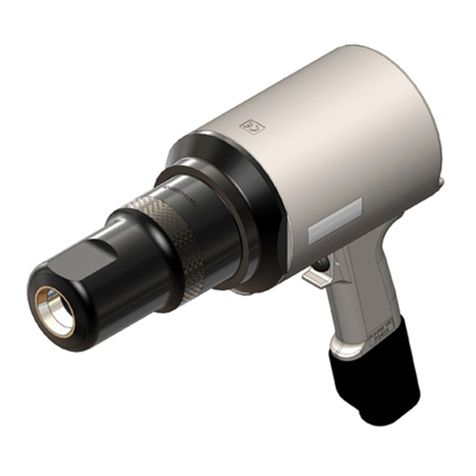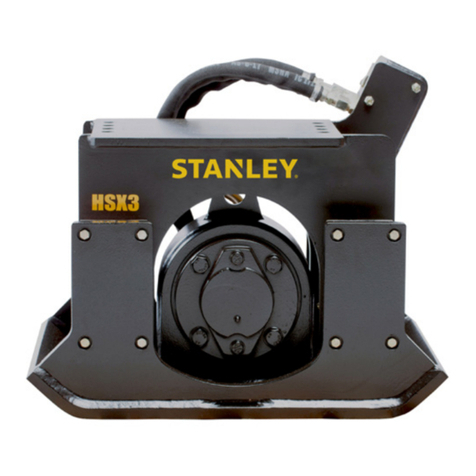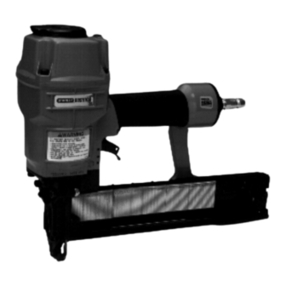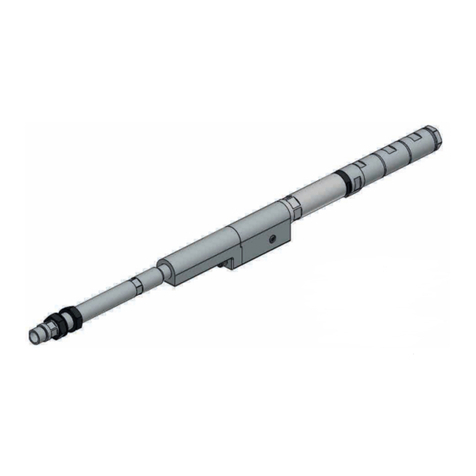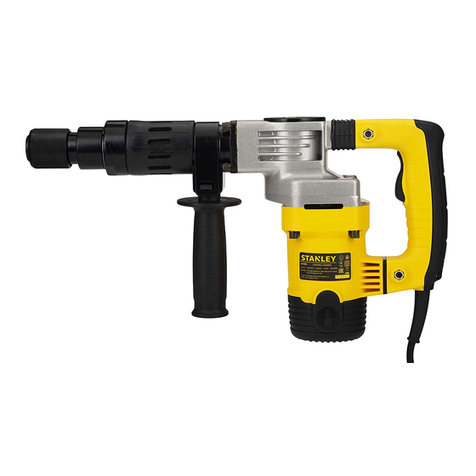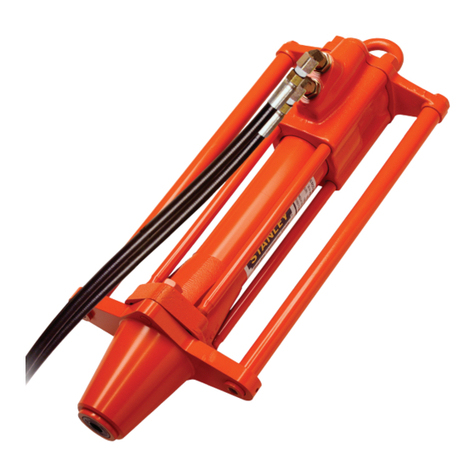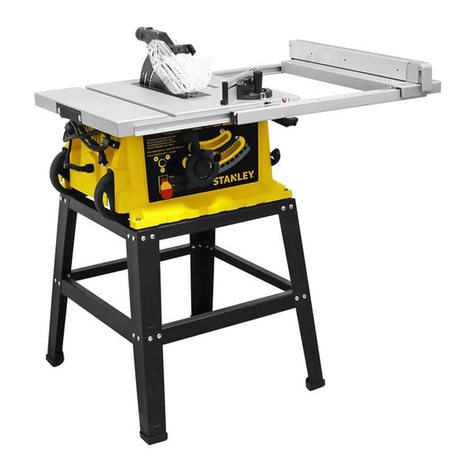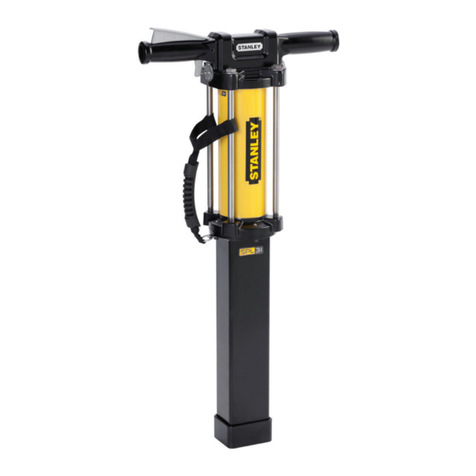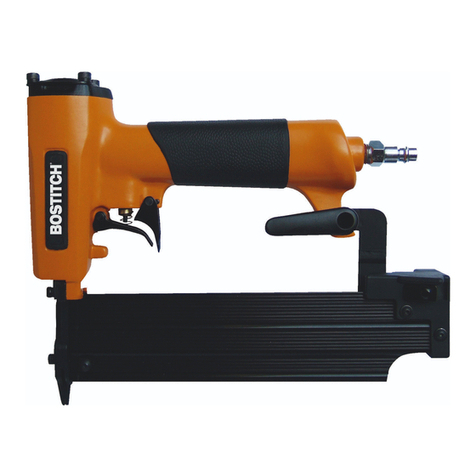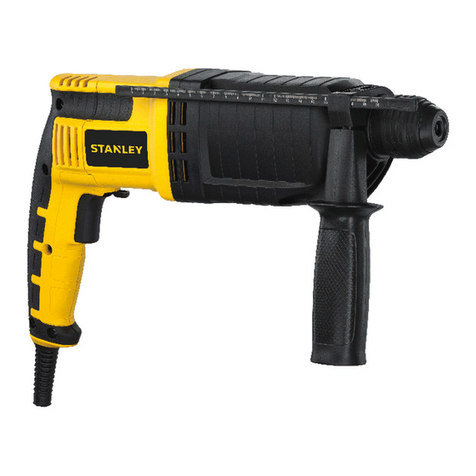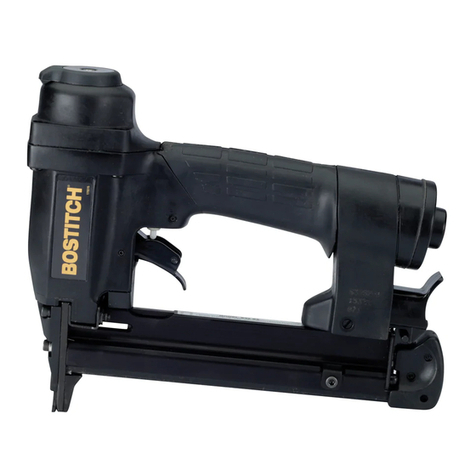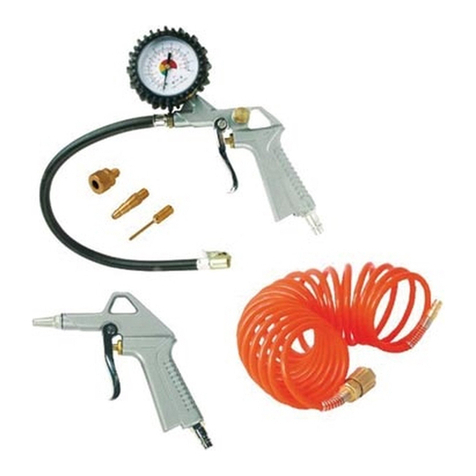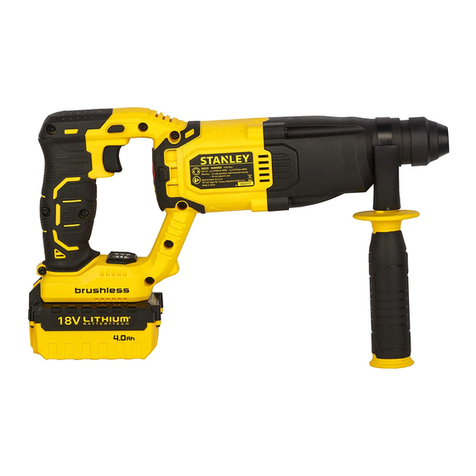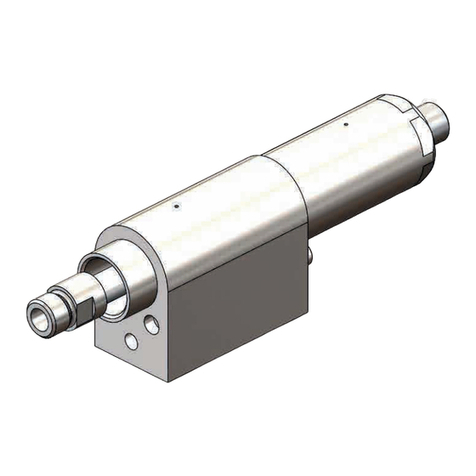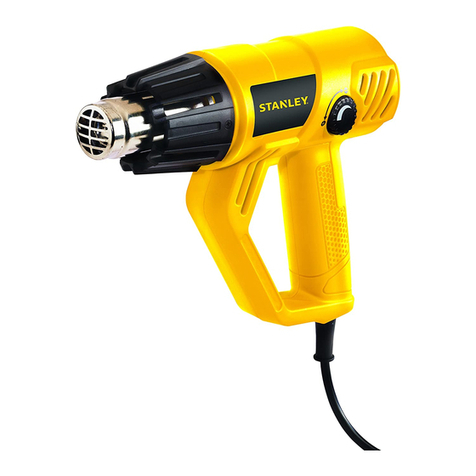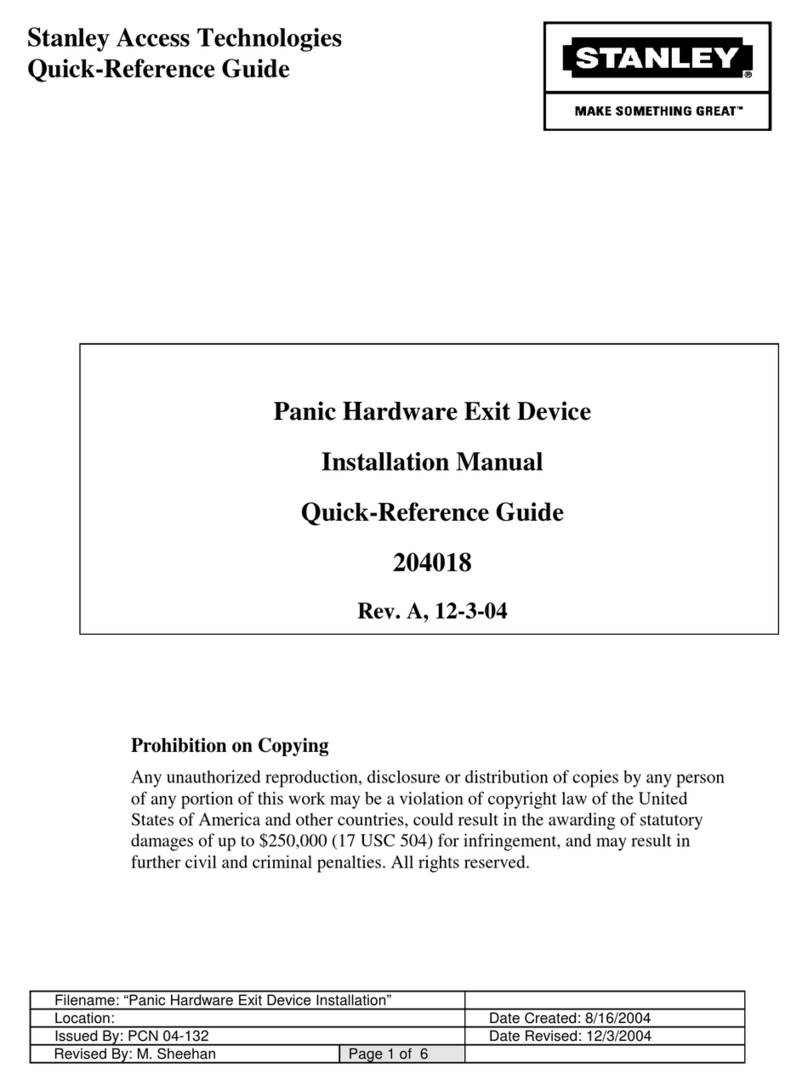
TO DISASSEMBLE
1. Remove remaining rings.
2. Remove (1) #8-32 button head screw (#26) from pivot pin
(#19) (use two 3/32 hex Allen wrenches).
3. Remove pivot pin with remaining #8-32 button head
screw.
4. Lay tool magazine side down on a clean flat surface.
5. Remove (4) #8-16 torx head screws (#21).
6. While holding tool together, turn the tool over to flat side
of housing.
7. While holding power handle (#9) down, remove magazine
side of housing. All internal parts are now exposed.
8. Remove (2) #6-19 torx head screws (#27) from magazine
(#12) and housing (#13).
9. Remove magazine by rotating bottom of magazine toward
handle of housing and sliding forward.
10. Using a 3/32 punch, carefully drive pin (#14) from
housing (#13). Pusher assembly may now be removed.
TO RE-ASSEMBLE
1. Place left housing half (#20) onto a clean flat surface.
2. Insert Ringer guide (#28) into the front of the housing.
Optional: Install nose insert (#29) into the front of the
housing if the Ringer guide is not preferred.
3. Install left jaw link (#25) guide pin into left housing (#20)
groove.
4. Install upper jaw (#24) over link and insert pin (#5).
5. Install lower jaw (#3) onto left link aligning holes.
6. Install jaw open spring (#23) between jaws in grooves
orientated with open end to the front of the tool.
7. Install right link (#4) over jaws and previously installed
pin (#5) and insert second pin (#5).
8. Hook one end of spring (#2) onto bottom rear post of
upper jaw (#24). Insert pin (#1) through opposite end of
spring. Using the pin to extend the spring, install end of
pin into back hole of housing (#20).
9. Hook remaining spring (#2) onto top rear post of upper
jaw and extend over pin (#1).
10. Assemble rollers, delta/lamination assembly and pins (#6,
#7 and #8). Use grease during assembly to hold parts
together as well as for proper tool function.
11. Place delta/lamination assembly with rollers and pins (#6,
#7 and #8) into housing (#20) inserting pin (#6) into slot
behind upper jaw (#24).
12. Install roller (#18) onto rivet (#17).
13. Assemble movable power handle sub-assembly (items #9,
#17 and #18). Gently spread arms of movable power
handle (#9) and insert rivet with roller into the cross holes
in the handle, lightly grease roller.
14. Gently lifting lower linkage of delta/lamination assembly,
slide linkage through arms of movable power handle.
15. Insert pin (#22) through linkage (#7) into housing (#20).
16. Assemble (1) #8-32 button head screw (#26) onto pivot
pin (#19).
17. Insert pivot pin (#19) into left housing (#20) and power
handle (#9) from the bottom side.
18. Slide pusher / spring assembly (#11) through the tunnel of
housing (#13) from back to front. Pull spring / roller
forward until it aligns with hole in housing. Carefully
drive in pin (#14), through housing and spring roller.
19. Slide magazine (#12) through housing from front to the
back rotating as needed. Attach with (2) #6-19 torx head
screws (#27).
20. Place right housing half (#13) over left housing (#20)
being careful to align all pins with holes and slots. (Hint:
align pin #1 first.)
21. Install (1) #8-32 button head cap screw (#26) into pivot
pin (#19).
22. Carefully turn over tool onto flat surface. Re-assemble
tool with (4) #8-16 torx head screws (#21).
LUBRICATION
1. The D-Ring Hand Pliers are designed with all metal parts
produced from stainless steel to insure long, trouble-free
service with minimal lubrication.
2. Excess oil in the pliers will attract dirt, lint, and the
adhesive material used in collating the fasteners,
preventing smooth operation. When lubrication is used,
always use a good water dispersing lubricating oil into the
tool. (i.e. WD-40). Disassembly is not required to apply
spray lubricant.
3. When servicing or repairing tool use white lithium grease
on all moving parts.
TIPS ON EXTENDING TOOL LIFE
The serviceable life of the D-Ring Hand Pliers can be extended
greatly by using the following guidelines:
1. Always use Stanley Fastening Systems brand fasteners.
Never replace worn or broken parts with anything other
than genuine Stanley Fastening System parts. Generic
fasteners may shorten the life of your hand pliers and will
void the manufacturer’s warranty.
2. Keep your pliers clean and dry.
3. Exercise caution not to drop equipment. Pliers dropping
onto the floor or ground is a primary reason for parts
replacement.
4. Under normal use occasionally spray a water dispersing
lubricating oil into the tool.
HELPFUL HINTS FOR FIELD SERVICE TOOL JAMS
1. The most common reason for jamming problems in the
hand pliers is insufficient pusher spring tension. This
occurs when the tool is forced to function when ring
quantity is not sufficient. This tool is not designed to
empty its magazine during operation. Reload when the
pusher makes contact with the tunnel in the housing.
2. If a jam occurs, pull pusher back to the locked position and
pull rings out of jaw mechanism area. Point nose of tool
down while holding onto rings, cycle tool slowly.
Operator may need to shake pliers to assist the ring(s) in
falling out. This should force jammed ring(s) out of jaw
mechanism.
3. If procedure “2” does not clear the tool, lay tool on a clean
flat surface with magazine side up. Remove jammed rings
from between the jaws with a small screw driver. Remove
build up of dirt, lint, and any other foreign debris and
check for worn or damaged parts.
4. If jamming still occurs, disassemble and inspect pliers for
worn or damaged parts.
5. Replace worn or damaged parts to keep tool operating
properly.
3 of 4 07/04
